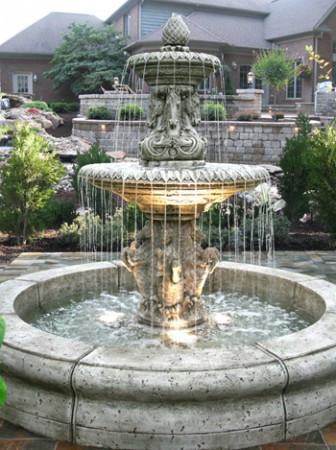How to Fill Extra Large Ceramic Planters
Many flowers, trees, and plants may be grown in containers. They may then be relocated anywhere, even inside throughout the winter, providing you with additional choices when growing perennials.
Many gardeners prefer ceramic pots over other materials. They may be painted, glazed, or left natural, and the forms can be customized to suit your preferences. Consider a few factors when buying ceramic pots and use a few planting methods to help your plants flourish.
Benefits of Ceramic Pots
Porous ceramic pots, commonly known as unglazed clay, enable air and water to pass through the pot's sides. However, since clay wicks moisture out of the garden soil, ceramic pots are a better option for plants like dry soils or tend to overwater. This also implies that plants grown in ceramic pots need more water than plants grown in plastic pots.
Ceramic pots are more attractive and elegant than other types of pots. They are appropriate for living room, bedroom, patio, and yard furniture. The pot body does not fade, distort, or hold water and has a lower damage rate than glass and plastic materials. It is also highly excellent and the finest option for any potted plant. The only disadvantage of clay flower pots over plastic pots is their somewhat limited air permeability.

Filling Your Extra Large Ceramic Planters
Perhaps your planter will be placed in a public area where it might be bumped against or stolen. Heavy materials may also be used for longer-term installations. Whatever the cause, here are some hefty pot fillers.
Soil is expensive, and filling a big planter may be pricey as well. The good thing is that you may fill your planter with a variety of materials such as plastic soda bottles, plastic milk jugs, or styrofoam peanuts.
You'll need to know how much soil your plant needs before you fill your planter. Filler will typically make up the bottom 1/4 to 1/3 of your planter. Look up the root depth of your plant on the internet or contact your local garden center or store. You'll need at least that much soil for your plant to thrive.
Aside from the apparent benefit of saving money on potting soil, there is another advantage to utilizing a filler. Because lightweight pot fillers are lighter than soil, they may help decrease your planter's total weight. Your planter will still be heavy, but not as heavy as it would be if it were filled with dirt. It may also help with drainage.
Drainage is often neglected. Every container plant needs drainage. You are right if you believe that the lack of drain holes necessitates less frequent watering. Therefore, when choosing a material, it is critical to ensure that it allows for drainage.
If your planter lacks drainage holes, we strongly advise you to drill some. With a basic power drill, you may simply make holes in a plastic or resin container. Then, simply drill a couple of holes on the planter's bottom. If you're worried about cracking, place a couple of strips of artist or painter's tape around the hole.
Light Materials
If you want to move it from one location to another or from inside to outside, decreasing the weight is a brilliant idea. If you're using food or drink containers, be sure to clean them before using them thoroughly. You don't want to contaminate your planter with food particles. This may result in germs, mold, unpleasant odors, and pests. These materials may be mixed and matched to get a suitable fit.

Reuse and Recycle Old Items
A textured external wall with hanging potted plants and recycled-material exhibits. Items headed for the landfill may be repurposed in your planter. Just make sure that they are clean first.
These are some examples:
- 2-liter containers
- milk jugs that have been flipped upside down or plastic containers with lids
- boxes of eggs
- soda cans that have been smashed (rinse before crushing)
- cans of tin
- Materials for Foam and Packing
- A vase in a box filled with foam packing peanuts.
- Using floral foam can retain water, allowing plants to go longer between waterings without rotting.
You may make use of:
- Packing peanuts made of foam blocks
- Coolers made of floral foam styrofoam
- Cups made of plastic or styrofoam
- Natural Products
- A close-up shows a pile of wood chips on the ground.
Natural materials may also be utilized to make a planter. Be careful that they will deteriorate with time. This is not detrimental to the plant, although it will compress as it decomposes.
Among the natural things are:
- Twigs and branches twigs and branches twigs and branches twigs and branches twig
- Pine cones, leaves, coconut fiber, and peat moss
- Items of many kinds
- An old vacuum cleaner was repurposed into a flower planter
In addition, these have the benefit of neither settling nor deteriorating over time, making them an excellent long-term option.
Elevate Your Greenery with Extra Large Ceramic Planters
Ceramic clay pots are prone to chipping, while plastic lasts far longer. However, that slight drawback may easily be ignored since the benefits of ceramic pots are much more significant. They may be adorned in a variety of ways and will undoubtedly give a pleasant zing to your landscape.
Ceramic pots are not only excellent for plants, but they are also visually appealing. Plastic may be a symptom of environmental negligence. On the other hand, ceramic pots are visually appealing and may be adorned and utilized as an interior design feature. The peaceful atmosphere created by the numerous ceramic pots and fresh plants in them is highly appealing.
Elevate your greenery with the grandeur of extra large ceramic planters. These stylish and versatile containers add a touch of sophistication to your indoor or outdoor spaces, allowing you to showcase your plants in a stunning and eye-catching way.
